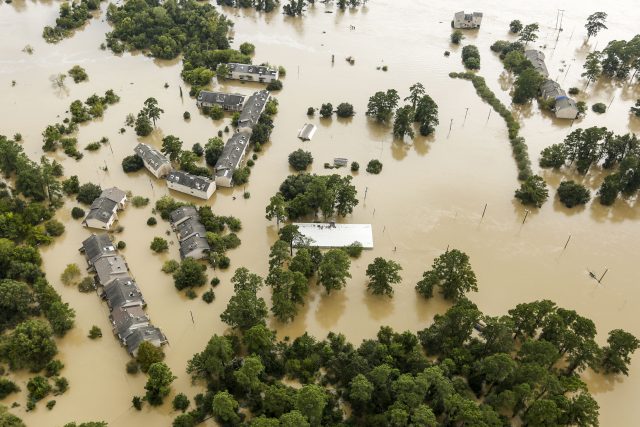Blasts at Texas chemical plant produce ‘incredibly dangerous’ plume
Officials insisted the community was not in danger despite a 30ft to 40ft flame and black smoke at the plant.

Fires and two explosions have rocked a flooded chemical plant in Texas, sending up a plume that federal authorities described as “incredibly dangerous” and adding a potential new hazard to the aftermath of Hurricane Harvey.
The blasts at the Arkema plant, about 40 kilometres (25 miles) north-east of Houston, also ignited a 30ft to 40ft flame.
The French operator of the plant said up to eight more chemical containers could burn and explode.
Local officials insisted that the explosion produced no toxins.
The blasts happened as floodwaters from days of relentless rain began to recede and the threat of major dangers from the storm shifted to a region near the Texas-Louisiana line.
Fire authorities said the blasts were small and that some deputies suffered irritated eyes from the smoke, but they emphasised that the materials that caught fire shortly after midnight were not toxic.
Even so, the Texas Commission on Environmental Quality urged people in the area to stay indoors with their windows closed and air conditioners running, and to restrict physical activity.
Particles from smoke and chemicals can affect people with heart and lung problems.
At a news conference in Washington, DC, the administrator of the Federal Emergency Management Agency, Brock Long, told reporters that the plume was hazardous.
In the largely rural area surrounding the plant, officials said they went door to door to explain the situation and called on residents to evacuate, but leaving was not mandatory.
The plant in Crosby had lost power after the storm, leaving it without refrigeration for chemicals that become volatile as temperatures rise.
Arkema had shut down the plant before Harvey made landfall.

In Houston, rescues continued apace.
The fire department planned to begin a street-by-street search of thousands of flooded homes to look for anyone left behind in the floodwaters, a process that was expected to take one to two weeks, assistant fire chief Richard Mann said.
The latest surveys indicate that the storm and floodwaters have caused major damage to more than 37,000 homes and destroyed nearly 7,000, the Texas Department of Public Safety reported.
Further east, Beaumont and Port Arthur struggled with rising water after being pounded with what remained of the weakening storm.
The confirmed death toll climbed to at least 31, including six family members – four of them children – whose bodies were pulled on Wednesday from a van that had been swept off a Houston bridge into a bayou.

Beaumont and Port Arthur worked to evacuate residents.
Port Arthur found itself increasingly isolated as floodwaters swamped most major roads out of the city.
More than 500 people – along with dozens of dogs, cats, a lizard and a monkey – took shelter at the Max Bowl bowling alley, general manager Jeff Tolliver said.
“The monkey was a little surprising, but we’re trying to help,” he said.
Floodwaters also toppled two oil storage tanks in south Texas, spilling almost 30,000 gallons (114,000 litres) of crude. It was not immediately clear whether any of the spilled oil was recovered.

Forecasters downgraded Harvey to a tropical depression late on Wednesday from a tropical storm, but it still has lots of rain and potential damage to spread, with 4in to 8in forecast from the Louisiana-Texas line into Tennessee and Kentucky through until Friday.
Some spots may get as much as a foot, raising the risk of more flooding.
For much of the Houston area, forecasters said the rain is pretty much over.
“We have good news,” said Jeff Lindner, a meteorologist with the Harris County Flood Control District. “The water levels are going down.”





